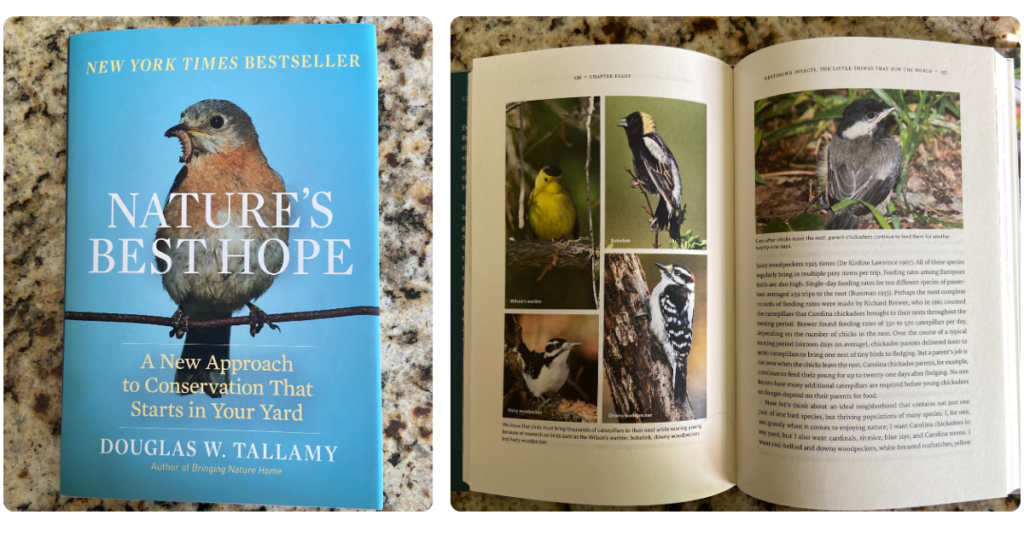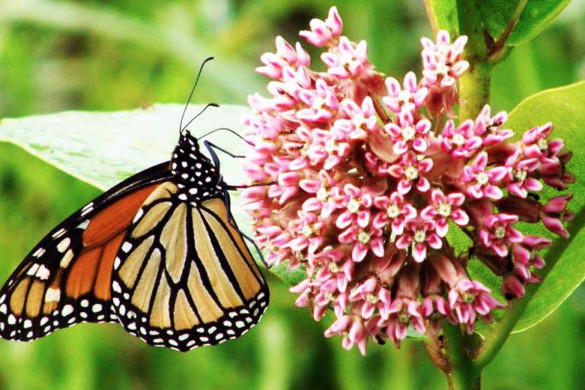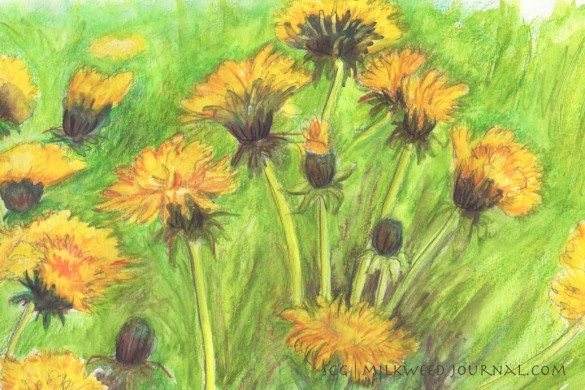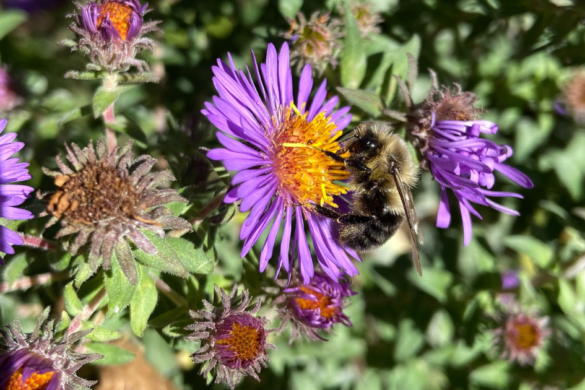Big, bold and a bee magnet — purple flowering raspberry (Rubus odoratus) is a gorgeous, striking native shrub for the right garden spot.
I say the right garden spot because this shrub gets BIG in a place it likes: in our garden it’s a sun/shade location below the kitchen window. It spreads by suckers and you can almost watch it grow day by day in early June.
The five-pointed bright green leaves are soft and broad. The flowers start blooming in June: they open dark purple and fade to lilac.
Keystone species
Purple flowering raspberry is a keystone species, a native plant that supports a large number of butterflies, moths and native bees in an ecoregion.
Keystone species is a term coined by American zoologist Robert T. Paine in 1969 to describe the outsized role some species play in supporting other organisms in an ecological community – like a keystone in an arch. Without the keystone the community would collapse or shift dramatically.
Raspberry (Rubus) species are host plants for 127 butterfly and moth caterpillars in the Eastern Temperate Forest region. And these butterfly and moth caterpillars are a vitally important food source for birds — their babies depend on them.
One study, cited by Doug Tallamy in his book, Nature’s Best Hope, found that chickadee parents brought 6,000-9,000 caterpillars to feed their nestlings over a 16-day nesting period!

Special value to native bees
Purple flowering raspberry is also of special value to native bees, including providing natural nesting habitat and structural material for their nests.
Some bees tunnel into the pith of old raspberry canes to nest. Others use the leaf material: the leafcutter bee cuts circular pieces of leaf that it rolls up to use as nests.
Bumblebees, sweat bees, small carpenter bees, yellow-faced bees and mason bees are other native bee species that will come to purple flowering raspberry for pollen and nectar.
Seven feet and counting…
We planted one purple flowering raspberry in 2020. As of this morning, I estimate it’s seven feet tall and fills a 12-foot-wide space (see below).
We pull up suckers and cut it back as necessary away from the pathway in front and to reach the water tap beside. It’s thornless, thank goodness. If you have a sun/shade spot that you want to effortlessly fill with something that does good for countless bees, butterflies and birds, this may the native shrub for you.












